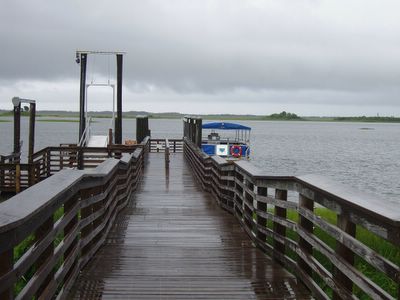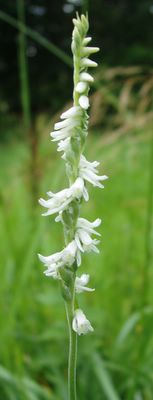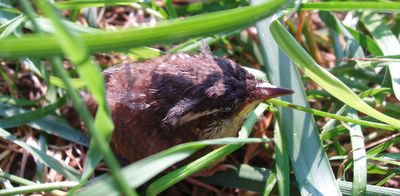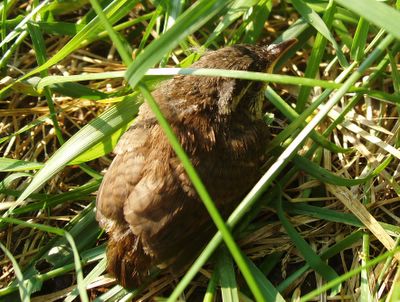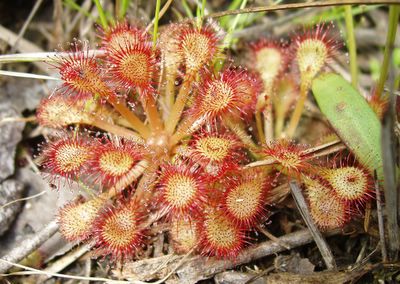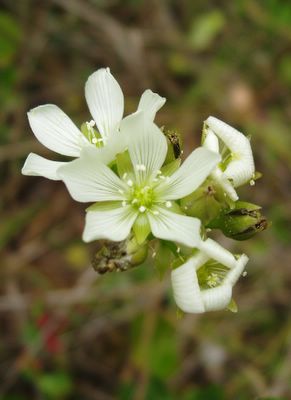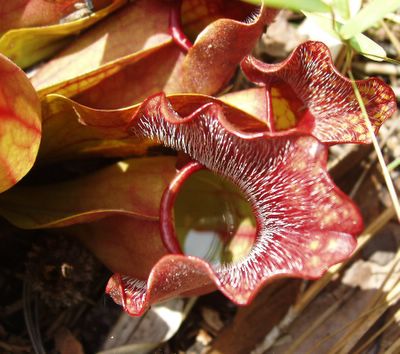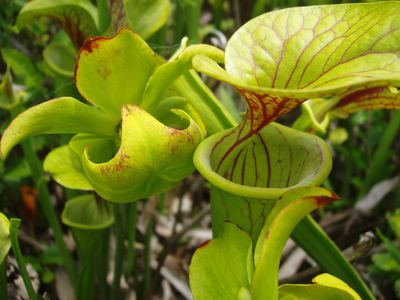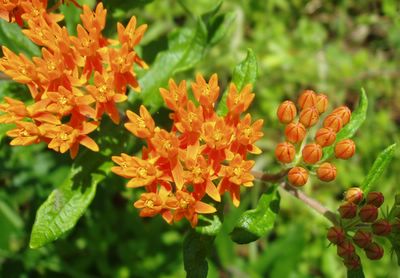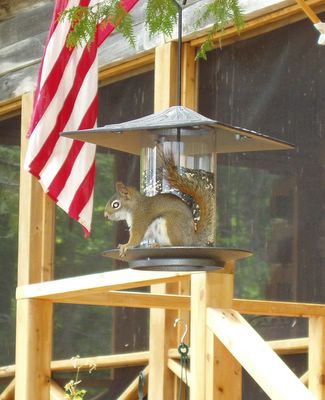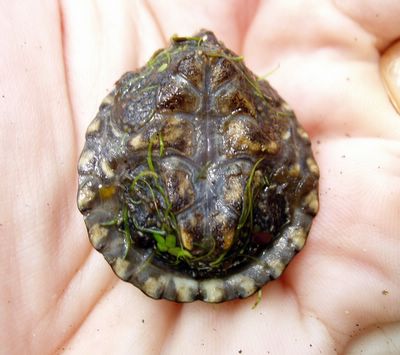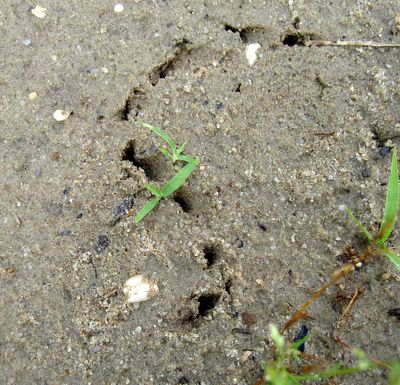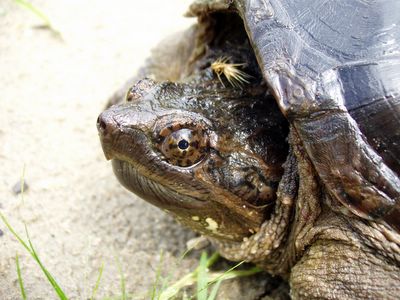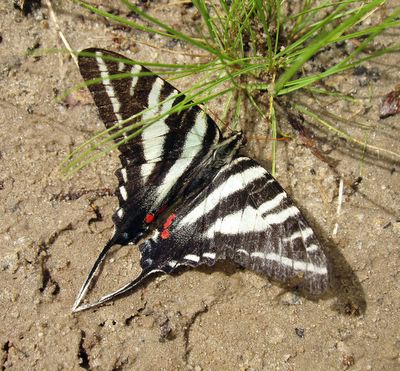I realized I hadn't posted any snake pictures in a while. So, with apologies to Keith, here are some photos of some slithery creatures we have seen recently...
(Keith, I'm giving you time to change your mind about scrolling down to the picture...the first one is of a venomous snake...)
(Last chance! I won't be responsible for adverse reactions...)
My husband found this very cooperative Copperhead (
Agkistrodon contortrix) on the road to his office this morning. He didn't want the snake to get hit and he knew I needed a picture of a copperhead, so he brought it to me for a photo session before he returned it to its home.
(
DO NOT handle venomous snakes unless you are trained to do so!!! They can inflict painful bites that can make you quite ill.)
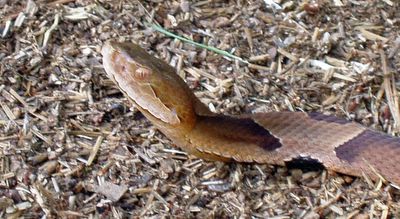
Notice the vertical pupil and the little pit in front of the eye. Cooperheads are our most numerous venomous snake.
I happen to think they are one of our prettiest snakes as well.

This one was a bit dinged-up for some reason. It will look a little better after it sheds.
Another snake we encountered during a recent walk was this Eastern Hognose Snake (
Heterodon platyrhinos). Hognose snakes vary greatly in their color patterns. This one was almost completely black.

You can't see it in the picture, but the hognose has a cute little up-turned snout.
When provoked, this snake can put on an elaborate act. Generally it starts with loud hissing and a flattening of the head. If you keep on pestering it, it will usually roll over onto its back, stick out its tongue and pretend to be dead. Despite all of its show, the hognose (a.k.a. "spreading adder" or "blowing viper") rarely even attempts to bite. Toads are one of its favorite foods.
Here is a view of the flattened head. Some of the snake's pattern is visible with the scales spread out.
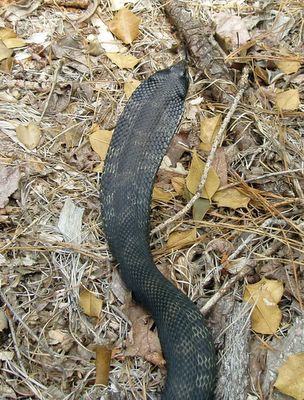
Many snakes put on quite a show when they feel threatened. My dog got this rat snake (
Elaphe obsoleta) all riled up one day last week. It was coiling and vibrating its tail against the ground. Very impressive. Rat snakes will strike if you push them too far.
The rat snake is non-venomous and is perhaps our most common snake. They can grow to about 85 inches in length.
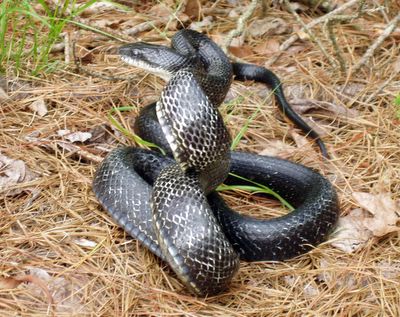
Last, but not least, I would like to share a picture of one of my favorite snakes, the black racer (
Coluber constrictor). We have quite a few of these snakes around our house. They seem to slide effortlessly through the grass -- often you only get a glimpse of their tails as they race off. But when cornered, they are very aggressive. They will lunge at you and vibrate their tails against the leaves -- a display designed to get you back off. Usually works. Racers are non-venomous.
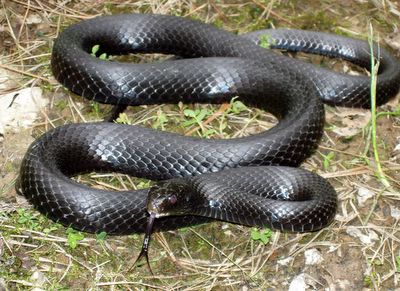
(You still with me, Keith? Yeah, I knew you'd look. Remember, it's exposure therapy. Breathe. Snakes really are such amazing animals...I hope you can one day overcome your aversion to them.)
